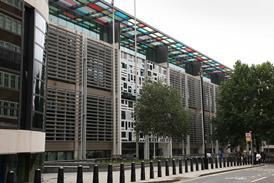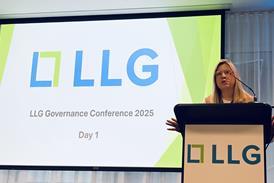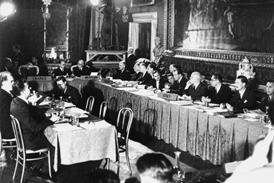Guidance from the Law Societies' conveyancing and land law committee
The Law Society is committed to improving conveyancing standards, and communication between the profession and its clients.
Therefore, the conveyancing and land law committee is concerned that the Society is receiving many complaints that solicitors, while using the protocol, are refusing to complete part II of the seller's property information form (SPIF).
It appears that this practice is growing and the reason sometimes given for refusing to complete part II is the decision in William Sindall plc v Cambridgeshire County Council [1994] 3 All ER 932.
When the conveyancing protocol was first introduced, the SPIF was in two separate parts, and the profession complained about this.
When the forms were revised in 2001, the Society responded to these representations and produced one form with two sections - the first part to be completed by the seller and the second part to be completed by the seller's solicitor.
The seller's solicitor is first asked: 'Is the information provided by the seller in this form consistent with the information in your possession?' The second question is: 'Do you have any information in your possession to supplement the information provided by the seller?' The solicitor must be under a duty in acting in the best interests of his client to check the information provided by the client with the information in the solicitor's possession.
This would entail checking the deeds and any relevant file.
One would have to do this in any event to check the title before preparing the draft contract.
This is required not only to act in the best interests of the client and to carry out a proper standard of work but also to observe good conveyancing practice (see the Law Society Conveyancing Handbook 2002).
The Sindall case related to a claim for rescission as a result of an alleged misrepresentation by the seller local authority in failing to disclose the existence of a sewer under land sold for development.
In replies to pre-contract enquiries, the council stated that so far as it was aware the land was not subject to any rights or easements, public rights or incumbrances.
After the buyer had obtained planning permission, the existence of a foul sewer built in 1970 was discovered.
It transpired that the sewer was recorded in documents held by the council's planning department but it was not recorded in the deeds.
The Court of Appeal held that the seller was required to disclose all easements of which it had knowledge or means of knowledge.
The buyer took subject to all other incumbrances.
It was stated in the judgment that '"not so far as the vendor is aware" represents not merely that the vendor and his solicitor had no actual knowledge of a defect, but also that they have made such investigations as could reasonably be expected to be made by or under the guidance of a prudent conveyancer'.
Lord Justice Hoffman agreed that this implied representation 'also implies that the vendor's records are not in such a state that a reasonable conveyancer would realise that they were inadequate for the purpose of enabling him to answer the question'.
But it was acknowledged that this did not mean there was an implied representation as to the efficiency of the vendor's record keeping.
In his judgment, Lord Justice Evans, who agreed with the judgment of Lord Justice Hoffman, stated that the judge at the first hearing had stated the correct test in law for that case: '....
knowledge may go beyond what is in somebody's head, that it requires a solicitor to read his file and to read it properly and to make (because his side has the advantage in terms of knowledge) reasonable and prudent investigation of the grounds upon which the belief is stated...
there are three possible types of information: (a) information in somebody's personal memory, (b) information which is in the files, and which the reasonable and proper investigations of a conveyancing solicitor when preparing his title for sale will reveal, and (c) other information which is either in an individual's memory and has been forgotten, or is in a file which the ordinary and prudent conveyancer's inquiries will not reveal.
Of these I consider that (a) and (b) will amount to knowledge for the purpose of the answer under consideration and (c) does not.'
The effect of this case would appear to be that a prudent conveyancer should check the deeds carefully, read the file and any other relevant files the firm may have by checking the filing records, and following this make any other reasonable and prudent investigations.
Checking answers given on SPIF1 must be part of the solicitor's duty as a prudent conveyancer.
Failure to do this would surely amount to at least inadequate professional service, and probably professional negligence.
This view is confirmed in an article in the 14 April 2003 edition of the Property Journal following the decision in McMeekin v Long (see [2003] 29 Estates Gazette, 120; The Guardian law section, 4 March 2003).
This case related to a claim for damages arising out of inaccurate answers both verbally and in writing to questions on SPIF.
This article concludes that this decision has important implications for both the sellers and buyers of properties and those who advise them.
It goes on to say that it should now be 'standard best practice for solicitors acting for a seller carefully to review the form (SPIF) with their client and review the answers given before sending out the completed form to the buyer.
Equally, it should be standard best practice for solicitors acting for a buyer carefully to review the completed form with their client'.
If a mortgage is involved on the transaction then the provisions of the Council of Mortgage Lenders' Handbook will also be relevant.
Under that, the solicitor is required to make all usual and necessary searches and enquiries - and checking the whole of the SPIF must be part of these enquiries.
Failure by the seller's solicitor for any reason to reply to SPIF part II would mean that the buyer's solicitor had failed to carry out all usual enquiries.
In addition, a solicitor should always be mindful of the need to act in the best interests of the client and to carry out a property standard of work, which would include observing good conveyancing practice.
If a conflict of interests arises between a solicitor and the client then the solicitor should cease to act.
The Society recommends that solicitors complete the second part of the SPIF form.



























No comments yet